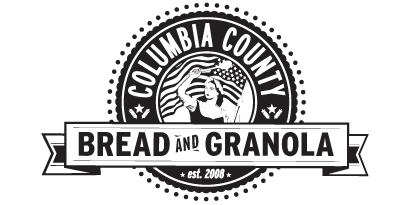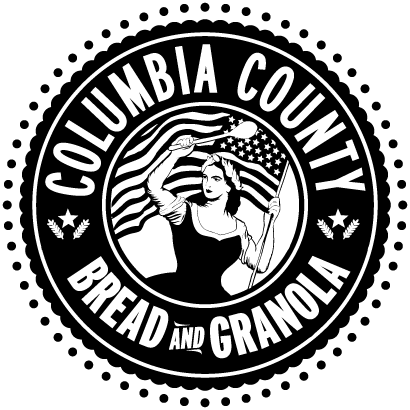
Are gluten-free slash Paleo slash Keto food manufacturers killing the planet?
Post written by Douglas Michael c 5/23/21
If the gluten-free dietary movement begat paleo which then begat keto, where is this thread of dietary trends taking us and what have we gained?
The three most popular dietary food trends in the last ten years are gluten-free, paleo and keto. All three dietary movements fundamentally sought to push consumers away from processed foods and toward whole foods of varying types. A laudable goal to be sure, unfortunately, this is not what has happened. Not even close.
Soon after Dr. Wm. Davis, published “Wheat Bellies” in 2011, he cautioned his blog readers that going gluten-free should mean “avoiding gluten-free” foods*1 – i.e., processed foods that are offered as alternatives for gluten-containing foods. And that’s because food manufacturers were doling out “gluten-free” foods made with rice flour, tapioca starch, corn starch and potato starch – all carbs that actually spiked higher on the glycemic index than does wheat starch.
And so what do we see lining store shelves as gluten-free food options for consumers? How about air-popped gluten-free potato fries*2 made with rice starch, potato starch and tapioca starch with packaging that proudly touts the fries as “heart-healthy snacking with none of the guilt.”
Shameless? Yes. Though hardly unique among gluten-free offerings. But it may also explain why gluten-free foods are now facing stiff competition on store shelves with foods listed as Paleo and/or Keto. Both of these dietary food trends would nix air-popped gluten-free potato fries as empty carbs and a major no-no for their adherents. Clearly, this is a step in the right direction until you take a look at what these new food trends are offering as they muscle their way onto store shelves hoping to attract the next generation of gullible consumers.
How about Jack’s Paleo Kitchen Cookie Dough*3?
Never mind the absurdity of proto-hominid Paleolithic people dipping their hands into a tub of grain-free cookie dough, this sort of hyped junk food epitomizes how truly ill-served consumers are when food manufacturers latch onto the next big dietary movement in hopes of making an easy buck.
But it gets worse. To displace the empty carbs found in so many gluten-free offerings, Paleo and Keto food manufacturers have turned to almond flour.
And really, what could be better? Almonds are not only gluten-free but exceedingly rich in fiber, unsaturated fats and a range of beneficial nutrients. And, they do not spike on the glycemic index. In short, consuming food-stuffs made from almond flour and/or almond milk on a regular basis is a great idea. Right…? Sadly, no. And why not? Because, there’s a very big problem with processed almonds.
The fact is, vast and highly profitable almond grove plantations are taking over California’s available cropland. And these massive groves are sucking up water from rivers and aquifers and leaving much of the state high and dry with disastrous and deadly consequences.
The water footprint for an average single almond is an astonishing 3.2 gallons*4. That’s a staggering thirst for water and it is why California almonds have become a huge political, economic and environmental issue within the state since well over 80% of the world’s almond supply comes from California growers*4. Almond grove irrigation is not only depleting river flow, it is drawing down ground-water aquifer levels at an alarming rate*5. Land subsidence in California is easy to see as roadways buckle when the aquifer’s porous substrate collapses, never to recover. And, as our climate continues to warm, almond’s water requirements are only projected to go up*5. Add to this, the heavy reliance on pesticides to maintain almond groves and the subsequent and massive die-off of bee populations that almond growers have abused to sustain the insatiable demand food manufacturers have placed upon almond production.*6 *7
On a side note, research*8 on almond milk shows that a typical 8 oz serving is nearly 98% water. The remaining 2% are actual almonds that are grown, pressed and processed into a white, milk-like liquid. Ironically, that means that an average 8 oz serving of almond milk requires13 gallons of water to convert a handful of almonds into a single glass-sized serving. Ask yourself, is this a realistic and sustainable option for consumers as we seek to move toward a better, more responsible world to leave to the next generation?
This problem of sustainability is tragically true of another recent darling of the gluten-free / paleo / keto crowd – coconut flour. Food manufacturers are importing tons of coconut meal to process into yet another substitute for gluten-containing wheat. Since most coconut and palm oil groves are located in distant lands, we rarely see the environmental devastation that demand is having. But as ancient forests are razed to make room for “sustainable” farmed palm groves the loss of wildlife, local indigenous populations and natural biosphere activity is, well, lost.*9
So the question has to be, is much maligned wheat and its component protein compound, gluten, really so bad that we have to burn down half the world to avoid it, or, can wheat be made to be more digestible, nutritious and sustainable.
The answer is a resounding yes. And what’s truly astonishing is that the fix for wheat and complications brought on by gluten is something we’ve known about for thousands of years. Ever since homo-sapiens first discovered grass seeds could be collected, planted, harvested then soaked, ground and pressed and sun baked into a life sustaining manna. It was this simple concept that not only gave rise to agriculture but ultimately lead to the intuitive hand skill of the village baker who worked with the miller as water and wind powered mills ground wheat berries into a nutritious life force that fueled human advancement for generations.
It wasn’t until industrialization of our food supply arrived that the nutritional value of bread declined. Skilled bakers were replaced with endlessly churning machinery and the baker’s prized sourdough starter was tossed from the factory in favor of a rapidly foaming isolated form of yeast. At the same time, industrialized agriculture displaced the family owned farm with massive agri-concerns that produced high-yielding crops for mega-scale industrial flour mills. Nutritional content of wheat or, for that matter, bread, was of little or no interest to the marketing apparatus that sold cheap, shelf-stable food-stuffs that resembled bread. And as this industrial food chain proliferated, it was applied to all commodity crops, to fruits, berries, nuts and animal processing. And thus, the sharp decline of the American diet began with resulting spikes in diabetes, heart disease, obesity and on and on.
So how do we fix what ails wheat and, consequently, bread?
The answer is simple and we’ve known it since the dawn of agriculture.
Sprouting. This basic process of soaking grain for approximately 24 hours works to convert wheat from a grain into a nascent plant – wheat grass. And the benefits of this transformation are manifold as the fiber profile increases, starches convert to easily-digested simple sugars and phytic acids and other anti-nutrients are neutralized while gluten strands naturally degrade.
So maybe wheat really isn’t as problematic as you’ve heard. The fact is, anyone can make an incredibly healthy loaf of bread by doing exactly your great grandparents did; nurture a sourdough culture or, starter, and get baking. Short of that, find a sourdough baker in your town and support their efforts. And get to know your baker. Find out if they source their grain from local farms. Ask if they source so-called ancient grains; i.e., Spelt, Emmer and Einkorn. Then ask if you can see and smell their sourdough – the fragrance of true sourdough is earthy, rich and unmistakable. Ask if they work with sprouted grains and, if not, encourage them to do so. Then learn to relish the tang of real sourdough and the chewy dense crumb of a whole grain bread.
And one final note, there are exciting new advances in grain development that don’t involve GMO but could radically alter the current devastating impact of industrial agriculture. Kernzar *10 is a perennial grain that can be grown over multiple harvests, creating a nurturing, bio-diverse cropland while re-capturing carbon and thereby building healthy soil naturally.
NOTE: If you’re looking for a nutty alternative to almonds, you might not have to look any further than your own backyard. Oak trees drop acorns in abundance every fall across most of the country. Acorns must be soaked before eating (same as wheat and almonds, actually) but their nutritional profile is reportedly even better than that of almonds*11. Ironically, acorns were a staple of Native Americans and American colonials. Much of Central California that has been dedicated to almond groves was once thick with life sustaining and regenerative oak trees12.
Douglas Michael
Owner/Proprietor Columbia County Bread & Granola
1.) https://www.wheatbellyblog.com/2018/12/the-horrors-of-gluten-free-food/
2.) https://www.desertcart.jp/products/56800317-gourmet-basics-smart-fries-classic-sea-salt-air-popped-low-fat-snacks-gluten-free-low-fat-non-gmo-reduced-fat
3.) https://www.jackfrancisfoods.com/product/sugar-cookie-dough/
4.) https://www.sciencedirect.com/science/article/pii/S1470160X17308592
5.) https://www.sacbee.com/news/local/environment/article231906623.html
6.) https://www.theguardian.com/environment/2020/jan/07/honeybees-deaths-almonds-hives-aoe
7.) https://www.mynspr.org/post/what-pesticides-are-sprayed-almond-orchards-and-are-they-harmful-those-who-live-nearby#stream/0
10.) Kernza is registered with The Land Institute. For more information, www.kernza.org
11.) https://www.thehealthyhomeeconomist.com/acorn-nuts-superfood/
12.) https://www.scientificamerican.com/article/is-reintroducing-acorns-into-the-human-diet-a-nutty-idea/
Leave a comment
Comments will be approved before showing up.





